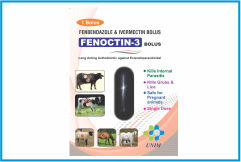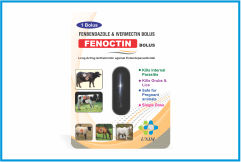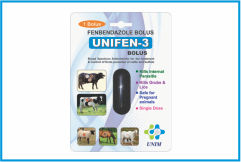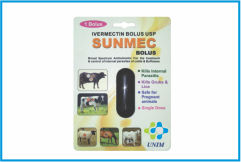Unim Pharma Lab Pvt. Ltd Is a fully furbished and well developed manufacturing company located in Sabarkantha. It has also Facility of research center and it has the latest research-based Best Oral Dewormer For Cattle Products.
producers can determine if their current program is working by conducting a fecal egg count reduction test on a group of cattle. The premise of the fecal egg count reduction test is to determine dewormer efficacy by measuring how many parasite eggs are present in the manure before dewormer treatment and how many are present after treatment. A dewormer is considered effective if there is at least a 95% reduction. Producers who are interested in conducting a fecal egg count reduction test should contact their veterinarian or local extension agent for additional details and instructions.
If producers find that their current program is not effective according to results obtained using a fecal egg count reduction test, they should consider the following practices:
- Only deworm “high-risk” animals. These animals include younger cattle (<16 months), especially calves. Older cattle generally develop a tolerance to gastrointestinal parasites and are better able to cope with their presence than younger animals.
- Do not deworm by the calendar. Cattle should only be dewormed when they need it, not simply because of the season or time of year. A single composite fecal egg count can be performed for a group of cattle to evaluate the current parasite load.
- Perform selective non-treatment. This practice ensures that there are sufficient parasite numbers that are unexposed to an anthelmintic which will help maintain a population of susceptible parasites (referred to as “refugia”). To implement this strategy, producers should deworm all animals in their high-risk groups except for the top 10 to 15% heaviest/best performers.
- Utilize combination treatments. This strategy involves simultaneous treatment with at least two drugs in different classes (e.g., one benzimidazole and one macrocyclic lactone; levamisole and one benzimidazole, etc.). With this approach, any parasites resistant to one drug class will likely be susceptible to the other class, which would greatly reduce selection pressure for resistance to either drug. This method is much more effective in controlling the development of resistance than rotating between drug classes.
- Avoid under-dosing. Under-dosing commonly occurs when animals are not weighed prior to treatment such that a lower dose is used than is required for maximum effect. This is a serious problem that certainly contributes to the selection of resistance. To avoid under-dosing, be sure to weigh animals to determine the proper dosage. Ideally, a set of scales is used for this; however, if scales are unavailable, the use of an appropriate weigh tape is better than nothing.
- Examine grazing practices. Short forages resulting from overstocking and overgrazing pastures force animals to graze closer to manure piles and increase the risk of parasite exposure. Implementing rotational grazing and giving paddocks adequate rest (4-5 weeks) can also help break the parasite life cycle and reduce the risk of exposure.
- Continue to evaluate the program to ensure efficacy. This can be accomplished by performing a fecal egg count reduction test every few years.


.jpg)







0 Comments